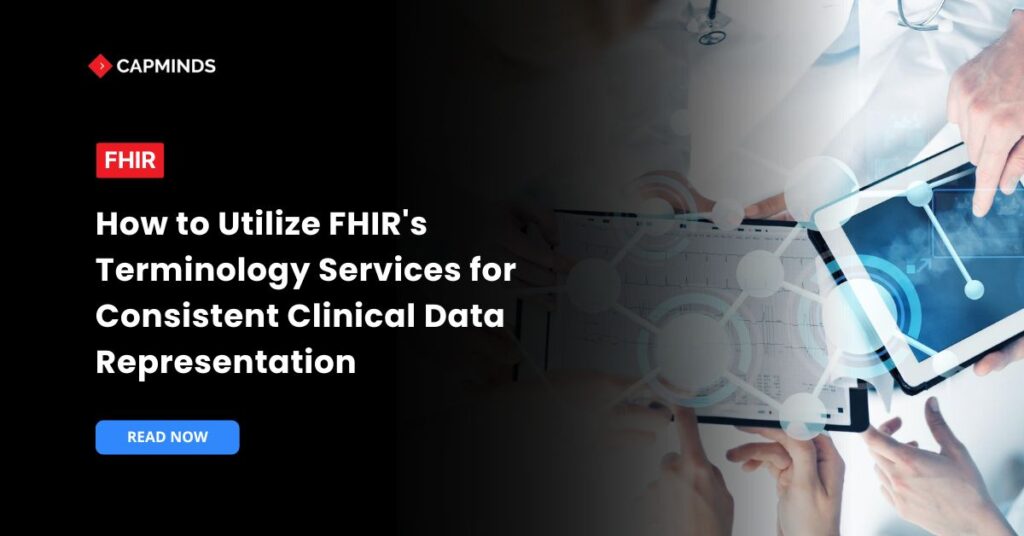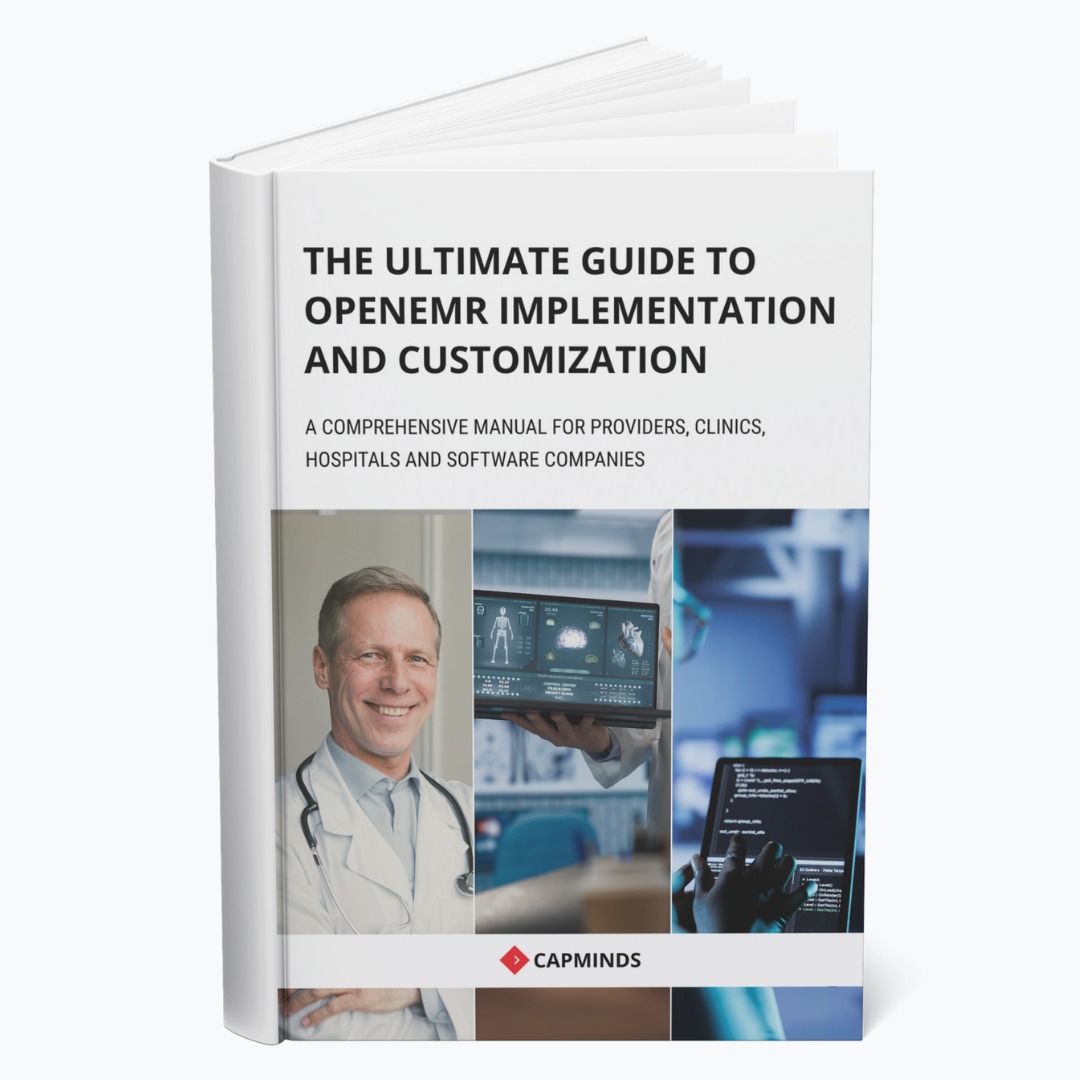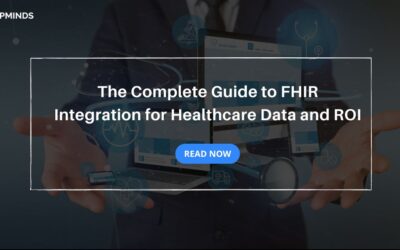How to Utilize FHIR’s Terminology Services for Consistent Clinical Data Representation
Healthcare providers use patient data every day for making decisions. However different systems store data differently, leading to confusion. This inconsistency creates errors that impact patient care and safety. Standardized terminology ensures providers use the same language across systems.
FHIR Terminology Services helps make medical data clear and consistent. They standardize codes, making data exchange smooth between healthcare providers. In this blog post, we have shared how to utilize FHIR’s terminology services for consistent clinical data representation.
FHIR and Its Terminology Services
HL7 developed the Fast Health Interoperable Resource standard, which intends to facilitate the exchange of health data. The major goal of this standard is to ensure that healthcare providers may share patient demographics, prescriptions, allergies, test findings, radiography, and other safety information. FHIR is based on modern web standards such as RESTful APIs, JSON, and XML.
FHIR provides a versatile framework for managing various types of healthcare data. Here are some essential components of the FHIR healthcare standards:
- Interoperability of healthcare data.
- Uses RESTful APIs for HIE.
- Supports XML and JSON formats.
- The resource-based health model
- The components are modular and configurable.
- Widely adopted globally
- Enables secure data sharing.
Related: 5 Challenges Associated with HL7 FHIR and How CapMinds Helps to Solve
One of its key features is Terminology Services. It helps to manage medical codes and ensure data is uniform across different platforms.
Many providers face challenges with inconsistent medical terminology across platforms. FHIR Terminology Services solves this issue by defining medical codes clearly. This ensures that all providers use the same standard codes.
The 3 Primary Resources of FHIR’s Terminology Services
FHIR’s Terminology Services consist of three important components:
1. CodeSystem: Standardizing Medical Codes
What It Is: A CodeSystem is a structured list of medical terms and codes. It defines specific terms for diseases, medications, and medical procedures. Providers use these codes to ensure accuracy in patient records.
Example: Some well-known CodeSystems include
- SNOMED CT – Used for medical terms and diseases
- LOINC – Used for lab tests and results
- ICD-10 – Used for disease classification and billing
Why It Matters: These systems prevent confusion when providers document diagnoses or treatments. When everyone uses the same codes, errors decrease significantly. Standardized coding improves medical billing and insurance claims processing. Consistent terminology makes communication easier between different healthcare systems.
2. ValueSet: Organizing and Validating Terminologies
What It Is: A ValueSet is a collection of selected codes from CodeSystems. It helps providers choose the correct terms for specific medical conditions. These codes limit errors and ensure only relevant terms are used.
Example: Providers use ValueSets to document symptoms, diagnoses, and test results.
Why It Matters: ValueSets help standardize how specific medical conditions are recorded. Using the correct codes improves accuracy in patient records. This also helps ensure proper treatment and documentation consistency. ValueSets improve medical workflows by reducing incorrect data entries.
3. ConceptMap: Enabling Interoperability Across Systems
What It Is: A ConceptMap links codes from different CodeSystems for consistency. It helps systems translate and understand medical terms between databases.
Example: Providers use ConceptMaps to align different medical coding standards. This allows hospitals to exchange information seamlessly across systems.
Why It Matters: When data flows correctly, patient records remain accurate and useful. ConceptMaps reduce confusion when hospitals use different terminology sets. They ensure that providers understand medical data the same way. Using ConceptMaps helps improve data accuracy across healthcare networks.
Implementing FHIR Terminology Services in Healthcare Systems
Organizations must integrate FHIR Terminology Services into workflows correctly. This improves data consistency, efficiency, and compliance across healthcare operations.
1. Integrating Terminology Services into EHRs and Clinical Workflows
- Electronic Health Records must support FHIR for accurate data exchange. Providers should integrate standardized medical codes into clinical workflows.
- Automated validation checks can prevent errors in documentation entries.
- These features help providers maintain accurate patient records over time. Using standardized codes ensures consistent documentation in medical records.
- This prevents misinterpretation when multiple providers access patient information.
- Standardized documentation improves data clarity for better clinical decisions. It also enhances interoperability between healthcare institutions and insurance companies.
2. Using FHIR APIs for Real-Time Terminology Validation
FHIR provides APIs that allow systems to:
- Check if a diagnosis or medication code is valid. These APIs allow real-time validation of medical terminology.
- If a provider enters incorrect data, the system suggests corrections. This reduces mistakes in patient records and treatment plans.
- Automated validation ensures that only accurate terms are used. APIs also improve data consistency across different medical systems.
- With better validation, providers spend less time fixing errors. This speeds up administrative processes and improves efficiency.
For instance, if a provider enters a medication code wrongly, the API will immediately check if the entered code is valid and suggest corrections.
3. Ensuring Scalability and Compliance
- Healthcare systems grow and require more data handling over time.
- Organizations need scalable solutions that expand without disrupting workflows. Large hospitals handle thousands of patient records every day.
- FHIR Terminology Services must manage increasing data loads effectively.
- Compliance with regulations like HIPAA protects sensitive patient information. Providers must ensure data security and privacy in every exchange.
- Encryption and access control measures help safeguard patient records. Regular compliance checks help organizations meet industry regulations.
4. Automating Terminology Updates
- Medical terminology evolves with new research and healthcare guidelines.
- Automated updates ensure systems always use the latest codes available. This prevents outdated terminology from confusing documentation.
- Providers avoid errors by keeping records updated with new terms.
- Automated systems eliminate manual work when updating terminology databases. This improves efficiency and reduces the chance of human errors.
- Using automation ensures all providers work with the latest standards. Keeping data current is essential for accurate medical documentation.
Related: The Complete Guide to FHIR Integration for Healthcare Data and ROI
Benefits of Using FHIR’s Terminology Services
FHIR Terminology Services improve patient care and data sharing. They also reduce errors and streamline provider workflows efficiently.
1. Improved Data Interoperability across Healthcare Systems
- Standardized codes ensure seamless data exchange across different healthcare systems. According to ONC, interoperability improved by 20% in hospitals using standardized terminologies.
- Providers can easily access health records from various healthcare settings.
- When data flows smoothly between systems, providers can collaborate and make informed decisions.
2. Enhanced Clinical Decision Support and Accuracy
- Accurate medical records help providers choose the best treatment plans.
- Consistency in terminology allows you to better diagnosis and medication tracking.
- Structured data supports clinical decision-making with fewer risks. When providers use standard codes, patient safety improves significantly.
3. Reduction in Manual Errors and Misinterpretation of Medical Codes
- Incorrect codes cause problems in patient records and billing.
- FHIR Terminology Services prevents these errors using automated validation.
- For instance, If a patient has diabetes, using different terms can confuse them. FHIR ensures a single standard term to be used across systems.
- Accurate documentation ensures correct treatments and insurance claims processing. Reduced errors improve patient care and administrative efficiency.
4. Cost and Time Efficiency in Data Management
- According to a study, healthcare providers used to spend 30 to 49% of their time on paperwork.
- FHIR Terminology Services reduce the time needed for manual data entry.
- It helps to automate the administrative tasks. Automation improves workflow efficiency for faster documentation processing. So, that providers can focus on patient care.
Related: 8 Benefits of Adopting the FHIR Standard for Healthcare APIs
Common Challenges in Implementing FHIR Terminology Services
FHIR adoption presents some challenges for providers. Organizations should address these issues early for smooth integration.
- Some healthcare systems do not support FHIR natively yet. Older EHR systems require updates before integration is possible.
- Providers must learn how to use FHIR Terminology Services correctly.
- Training programs help staff understand how to apply standard codes. Without proper training, data entry errors may still happen.
- Healthcare organizations must comply with strict security and privacy laws. FHIR data exchanges must meet HIPAA and other legal standards.
Best Practices for Smooth Adoption in Healthcare
Organizations should follow best practices to ensure smooth FHIR adoption.
- Involve providers, IT teams, and administrators from the start to end of FHIR Adoption.
- Begin with pilot programs before expanding system-wide.
- Work with HL7 for best industry practices.
- Use encryption, authentication, and compliance checks.
- Keep medical codes and records up to date.
CapMinds HL7 FHIR Service for Healthcare Practice
CapMinds offers the best all-in-one health interoperability solution for healthcare practices. Our HL7 FHIR service will understand your clinical needs and requirements to cater to our solution.
We have years of experience in this field faced many challenges and tackled them with ease. Why can CapMinds be your Go-to Interoperability Solution?
- We are experienced professionals with years of experience in the field.
- Our technical team is an expert who will analyze your healthcare practice thoroughly to tailor the Interoperability solution.
- We prioritize safety, security, encryption, and authentication to protect your healthcare practice patient’s data.
- Our comprehensive solution ensures seamless interoperability adhering to industry standards, and using standard protocols.
- We offer comprehensive training sessions to healthcare staff.
- Our affordable health interoperability solution benefits healthcare practice at all levels.
If you are searching for the best interoperability service for your practice, CapMinds is your choice. We can assist you by navigating all potential challenges and ensuring seamless health data exchange.
Reach out to CapMinds Health Data Exchange Solutions for your Healthcare Practice.




